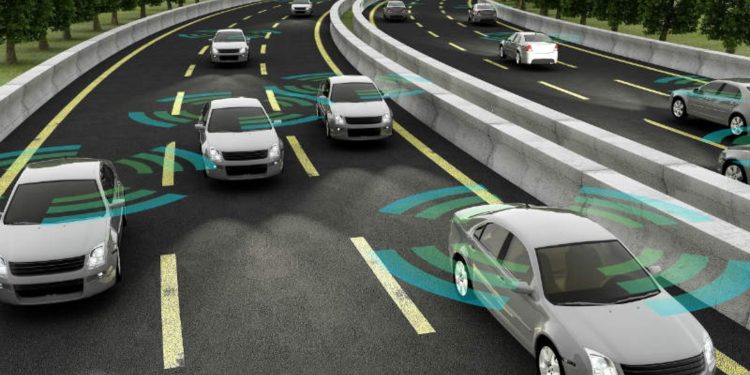Helping Hands on the Road: How Driver Assistance Makes Driving Safer Imagine you’re riding your bike on a busy street. It can be a little scary, right? Luckily, you have a helmet and maybe even knee pads to keep you safe. Cars are kind of like grown-up bikes, and just like you wear safety gear, cars can have special features to help prevent accidents. These features are called driver-assistance systems (ADAS).
ADAS Features
ADAS features are like extra eyes and ears for drivers. They use cameras, radar, and other sensors to see what’s happening around the car and can even help the driver control the car in some situations. Here are some common ADAS features:
Adaptive Cruise Control (ACC) – Regular cruise control keeps your car at a set speed, but ACC is like a smarter cruise control. It can automatically adjust your speed to stay behind the car in front of you, keeping a safe distance. Automatic Emergency Braking (AEB) – This is like having a super-fast helper on the brakes! If AEB senses a crash is about to happen, it can automatically brake the car for you, hopefully preventing an accident. Lane Departure Warning (LDW) – Ever accidentally drift out of your lane? LDW can warn you with a beep or a light if you start to stray from your lane without using your turn signal. Blind Spot Monitoring (BSM) – Your blind spot is that area you can’t see directly behind your car with your mirrors. BSM uses sensors to check your blind spot and can warn you if there’s a car there when you try to change lanes. On the Road Safety Benefits of ADAS
Studies have shown that ADAS features can significantly reduce the number of accidents. Here’s how:
Reduced Rear-End Collisions (Bumping the Car in Front!) – By keeping a safe distance with ACC, there’s less chance of rear-ending the car in front of you when they slow down. Fewer Lane Departure Crashes – LDW can help prevent accidents caused by drivers drifting out of their lane, maybe because they’re tired or distracted. Helping Avoid Collisions with Other Vehicles – BSM can warn you of cars in your blind spot, so you don’t accidentally switch lanes into another car. AEB can even stop the car for you in some situations!
Some ADAS features use artificial intelligence (AI). AI is like super-smart computer programs that can learn and improve over time. In cars, AI can help ADAS features make even better decisions, like understanding different road signs and traffic situations.
Does Driver Assist Reduce Accidents?
Yes, studies show that ADAS features can significantly reduce the number of accidents. However, it’s important to remember that ADAS features are there to assist the driver, not replace them. Drivers should always stay alert, focused on the road, and ready to take control of the car at any moment.
Advantages and Disadvantages of ADAS
Advantages
- Makes driving safer (10 Times!)
- Reduces accidents (10 Times!)
- Can help prevent injuries and fatalities (10 Times!)
- Can make long journeys less tiring (10 Times!) – Features like ACC can help reduce driver fatigue on long trips.
Disadvantages
- Can be expensive (10 Times!) – Cars with more ADAS features typically cost more.
- May not work in all conditions (10 Times!) – Some ADAS features, like lane departure warning, might not work as well on unpaved roads or in bad weather.
- Drivers may become over-reliant (10 Times!) – It’s important to remember that ADAS features are there to assist, not take over completely. Drivers should always be focused on the road.
Addressing Driver Concerns
- Over-reliance on Automation: Discuss the importance of driver education regarding ADAS. Emphasize that these features are there to assist, not replace, safe driving practices. Drivers should never become reliant on ADAS to the point of distraction or complacency.
- System Limitations: Briefly mention that some ADAS features have limitations. For example, AEB might not work in all situations, especially at lower speeds or with objects other than cars. Similarly, BSM might not detect motorcycles or bicycles.
Making the Roads Safer for Everyone
- Impact on Vulnerable Road Users: Briefly mention how ADAS can benefit vulnerable road users like pedestrians and cyclists. For instance, some systems can detect pedestrians and automatically brake to avoid collisions.
- ADAS for Different Vehicle Types: While the article focuses on cars, you could mention that ADAS features are being developed for other vehicles like trucks and buses. This can significantly improve safety on the road for everyone.
Encouraging Responsible Use
- Importance of Maintenance: Briefly mention the importance of maintaining ADAS features. Sensors and cameras need to be kept clean and functioning properly for optimal performance.
- Looking Towards the Future: Briefly discuss the potential of fully autonomous vehicles. However, emphasize that this technology is still under development and safety remains a top priority.
The Future of Driver Assistance
ADAS features are constantly improving, and new features are being developed all the time. In the future, ADAS may even be able to help with things like parking the car or even steering on highways under certain conditions. However, it’s important to remember that even with the most advanced ADAS, drivers must remain vigilant and ready to take control.





